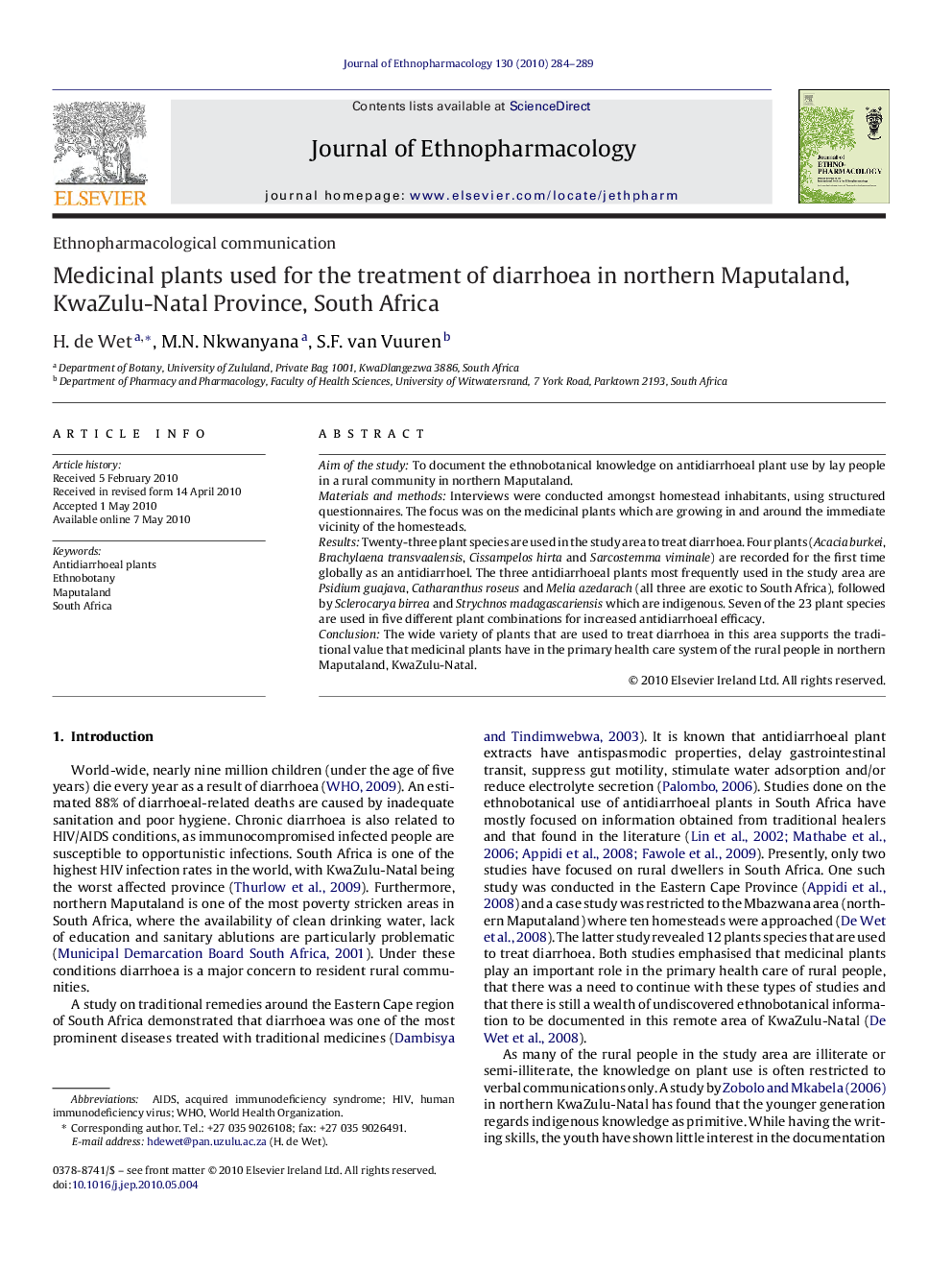| Article ID | Journal | Published Year | Pages | File Type |
|---|---|---|---|---|
| 2545949 | Journal of Ethnopharmacology | 2010 | 6 Pages |
Aim of the studyTo document the ethnobotanical knowledge on antidiarrhoeal plant use by lay people in a rural community in northern Maputaland.Materials and methodsInterviews were conducted amongst homestead inhabitants, using structured questionnaires. The focus was on the medicinal plants which are growing in and around the immediate vicinity of the homesteads.ResultsTwenty-three plant species are used in the study area to treat diarrhoea. Four plants (Acacia burkei, Brachylaena transvaalensis, Cissampelos hirta and Sarcostemma viminale) are recorded for the first time globally as an antidiarrhoel. The three antidiarrhoeal plants most frequently used in the study area are Psidium guajava, Catharanthus roseus and Melia azedarach (all three are exotic to South Africa), followed by Sclerocarya birrea and Strychnos madagascariensis which are indigenous. Seven of the 23 plant species are used in five different plant combinations for increased antidiarrhoeal efficacy.ConclusionThe wide variety of plants that are used to treat diarrhoea in this area supports the traditional value that medicinal plants have in the primary health care system of the rural people in northern Maputaland, KwaZulu-Natal.
Graphical abstractThe study area where ethnobotanical knowledge were documented on antidiarrhoeal plant use by lay people in a rural community in northern Maputaland, South Africa.Figure optionsDownload full-size imageDownload as PowerPoint slide
